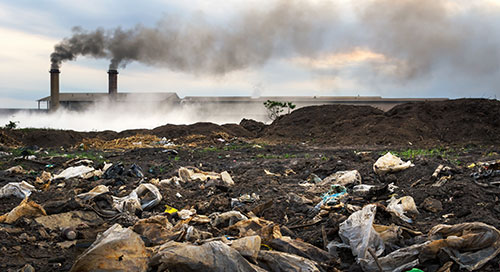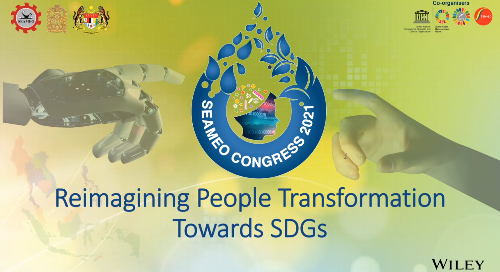the-need-for-entrepreneurship-in-sustainable-chemistry
July 06, 2021
Dr. Timothy J. Clark and Dr. Andrew S. Pasternak
GreenCentre Canada
Dr. Timothy J. Clark and Dr. Andrew Pasternak are editors of the new book How to Commercialize Chemical Technologies for a Sustainable Future, published by Wiley. This blog post has been adapted from the introductory chapter.
Why Commercialize Sustainable Chemical Technologies?
Every product, material, and object we own or use owes its existence in some way to the chemical industry. Our food supply, medicines, clothing, and mobile devices all depend on chemistry. The chemical industry plays a dominant role in the global economy, being responsible for over $5 trillion in revenue and 20 million jobs worldwide. It has also broadly contributed to our technological progress over the last 200 years.
The industry has also brought problems that are increasingly recognized as “must solve” to ensure environmental, economic, and even geopolitical stability. The intrinsic safety of chemicals available in the marketplace, in addition to hazardous materials released into the environment during manufacture, use, and disposal are receiving more attention than ever before. This also unsurprisingly coincides with the increasing number of peer-reviewed, data-driven reports demonstrating negative long-term effects on the planet and its inhabitants. Climate change and masses of non-recyclable plastics littering the ocean are just two obvious examples.
These challenges are daunting but not insurmountable, especially as there is no shortage of technical innovations and advances in sustainable chemistry emerging from around the world. The academic community is constantly discovering promising new chemical technologies, and, more importantly, entrepreneurs are becoming empowered and encouraged to bring them to market. This is imperative as any anticipated or quantified sustainable benefit associated with a given technology will never realize its potential while it remains a laboratory-scale research project. Or in other words, it is only through the development, scale-up, and commercialization of sustainable chemical technologies that these challenges can be overcome.
What Is Sustainable Chemistry?
Definitions of sustainable chemistry abound, and controversies have arisen over linguistic nuances. The Organisation for Economic Co-operation and Development (OECD) defines it as “a scientific concept that seeks to improve the efficiency with which natural resources are used to meet human needs for chemical products and services.” However, trade associations, individual companies, governments, and many non-government organizations all have variously differing definitions—many in ways that (not surprisingly) lend credence to their own mandate or beliefs. The term “green” also has numerous definitions and is applied, sometimes incorrectly, synonymously.
We propose a relatively simple definition. A sustainable chemical technology offers a demonstrated environmental benefit(s) while remaining economically competitive with existing technologies. This is a very broad definition as it addresses three key elements.
The first is most obviously the demonstrated environmental benefit. A chemical technology can only be deemed “sustainable” if it benefits at least one aspect of the environment. For example, direct protection of the environment by technologies that improve water use efficiency and treatment or reduce waste material production and release. These benefits can also present themselves in technologies that are not intrinsically environmental in nature but serve a greater purpose of reducing energy or resource use and thus, on balance, will improve the environment. A base metal catalyst that can replace stoichiometric reagents and lower the energy input required for a given process or bio-derived plastics that can be controllably degraded and recycled are examples. Comprehensive metrics and life-cycle analyses are required prior to making any formal claim regarding environmental benefits. The results of these analyses can be surprising. There are instances where technologies at first glance appear to be beneficial for the environment when in fact it is later proven otherwise. The converse can also be true.
Some may consider economic competitiveness to be less worthy. We wholeheartedly disagree. A technology that is not cost-competitive in its respective market will simply not be adopted regardless of any environmental benefit. Government regulations or subsidies can offer short-term economic attractiveness, but it is a risky proposition to base a business on the whims of a governing party. Even a panacea chemical technology won’t have its desired effect on the environment if it is never sold to, or used by, someone. Furthermore, the so called “green premium,” the additional cost of an environmentally friendly product, often negatively affects the consumer buying decision. Although many consumers claim to be eco-conscious, in practice a majority are reluctant to pay more for environmentally superior products.
Finally, existing technologies must be taken into account when assessing the sustainability of an innovation. No technology is evaluated in a vacuum. Everything is relative to what has already been developed and used by customers today. You cannot make a claim about any technological benefits without comparing them to a baseline of existing technologies. And there are always existing technologies. In our experience, one must be skeptical of claims of a completely novel innovation that will revolutionize the industry. Perhaps it will, but close comparison to existing technologies often paints a different picture. This concept applies to the two aspects described above; both the environmental benefits and economic competitiveness must be benchmarked.
Entrepreneurs Can Make It Happen
The issue at hand is how to advance a promising sustainable chemical technology to the point where it has been validated, demonstrated to be economically competitive, and scaled to meet customer demand. Unlike large multi-nationals with sizeable resources to address commercialization challenges, entrepreneurs are severely resource limited and face significant barriers. When it comes to raising the required funds, they are often trapped in a Catch-22 situation: funding requires validation and scaling, while validation and scaling require funding.
It is the entrepreneur who will undoubtedly play a crucial role in commercializing the technologies that ensure we maintain our quality of life while not robbing future generations of the same. This is the essence of sustainability. Multi-nationals will continue to invest and innovate, but their resources are not infinite and “out of the box” thinking and non-incremental solutions often pose a challenge to corporations who must answer to their shareholders. Many large companies today recognize this position and are looking to partner with start-ups developing attractive technologies. One could argue that the future success of larger companies is at least in part dependent on the success of these entrepreneurs.
Bringing a new technology to market is a hugely demanding activity and is rife with risks and challenges. However, it is also a noble and exciting pursuit because beyond the financial gains that can be had (and that is certainly a good motivation), the world needs innovative technologies to make sustainable progress through the 21st century.












